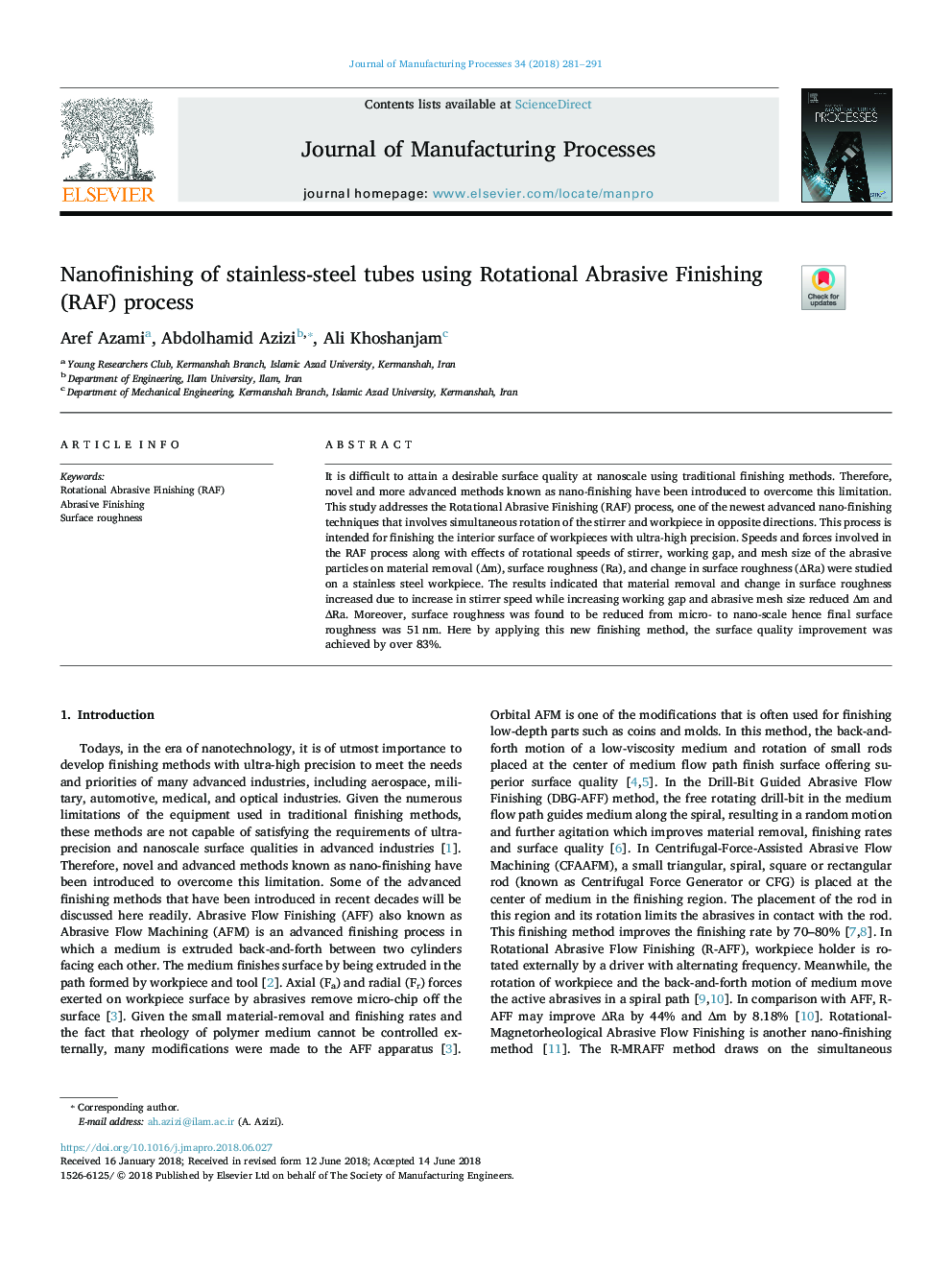| Article ID | Journal | Published Year | Pages | File Type |
|---|---|---|---|---|
| 8047868 | Journal of Manufacturing Processes | 2018 | 11 Pages |
Abstract
It is difficult to attain a desirable surface quality at nanoscale using traditional finishing methods. Therefore, novel and more advanced methods known as nano-finishing have been introduced to overcome this limitation. This study addresses the Rotational Abrasive Finishing (RAF) process, one of the newest advanced nano-finishing techniques that involves simultaneous rotation of the stirrer and workpiece in opposite directions. This process is intended for finishing the interior surface of workpieces with ultra-high precision. Speeds and forces involved in the RAF process along with effects of rotational speeds of stirrer, working gap, and mesh size of the abrasive particles on material removal (Îm), surface roughness (Ra), and change in surface roughness (ÎRa) were studied on a stainless steel workpiece. The results indicated that material removal and change in surface roughness increased due to increase in stirrer speed while increasing working gap and abrasive mesh size reduced Îm and ÎRa. Moreover, surface roughness was found to be reduced from micro- to nano-scale hence final surface roughness was 51â¯nm. Here by applying this new finishing method, the surface quality improvement was achieved by over 83%.
Keywords
Related Topics
Physical Sciences and Engineering
Engineering
Industrial and Manufacturing Engineering
Authors
Aref Azami, Abdolhamid Azizi, Ali Khoshanjam,
